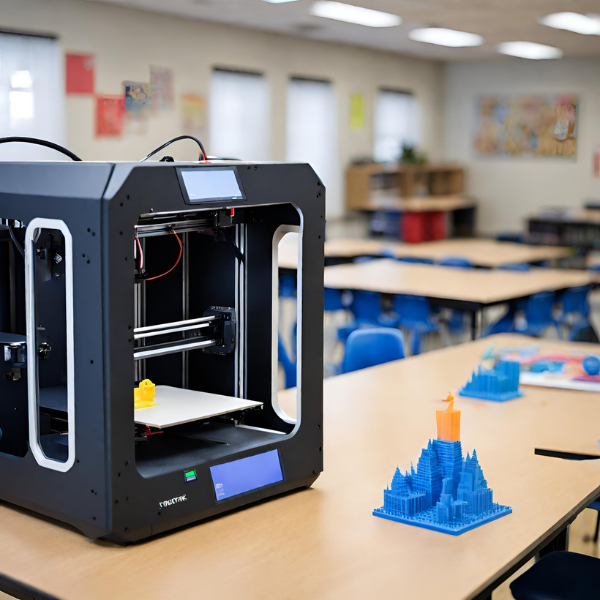Introduction: The classroom revolution through 3D printing technology
What is 3D printing and how does it work?
3D printing is a technique for creating things layer by layer. A 3D printer takes digital designs. He then transforms them into real objects using materials such as plastic. This means students can quickly and easily put their ideas into action. The printing process begins with a file from a computer program. This file shows the printer how to layer the object. This opens new avenues for learning and experimentation in the classroom.

The relevance of 3D printers in the education sector
3D printers are changing teaching in Germany. Technology is important for modern education. It fits well with new curricula. This way, students learn better for the future. The printer helps with many subjects. This is how children are prepared for the jobs of tomorrow. It also makes lessons more exciting. There are new ways to learn and teach. That's why 3D printers are becoming increasingly important in schools.
Educational benefits of 3D printing in schools
Promoting creative and practical learning
3D printers in school spark creativity. Students plan and create their own 3D models. This promotes logical thinking and problem solving. You learn by experimenting and improving. This offers an advantage over classic learning methods. In this way, they develop practical skills that are useful in professional life.
Integrating 3D printing into STEM subjects
3D printing enriches STEM subjects in schools. Teachers use it to make theory tangible. Students print models for math, biology, chemistry and physics. This makes learning clear and interactive. It also promotes technical understanding. Students learn complex content better. They work like real engineers and scientists. This motivates and prepares you for the future. 3D printing is a powerful tool in the classroom.
Individual learning opportunities and inclusion
3D printers offer many advantages in the education sector. One of these advantages is the individual design of learning. Students can realize their own ideas. This promotes creativity and self-confidence. Children with special needs also benefit. You can understand better through tactile learning aids. This is how 3D printing contributes to inclusion. Every student can learn at their own level. And no matter what skills he has.
Challenges and solutions
Technical and financial hurdles for schools
The introduction of 3D printers in schools is not without hurdles. Technical difficulties such as a lack of know-how and the cost of equipment represent barriers. One possible solution is to promote education initiatives and partnerships with technology providers. Schools could receive support in purchasing and maintaining the devices. Further training for teachers is also crucial in order to overcome technical challenges.
Curriculum development and teacher training
Integrating 3D printing requires new curricula.
Schools must train teachers in 3D technologies.
Further training courses can bring teachers up to date.
Practical workshops offer concrete use cases.
Working with experts is helpful.
The goal is to seamlessly integrate 3D printing into lessons. In this way, teachers and students remain technically competent.
Future perspectives: 3D printing as standard equipment in schools
While 3D printers have great educational potential, their implementation as standard equipment in German schools is a vision with obstacles and opportunities. The gradual integration of 3D printing technology requires thoughtful planning and support. Strategies could include, for example, providing government funding, working with technology providers for more favorable conditions or creating a resource pool for educational institutions. Additionally, it is crucial to provide ongoing training for teachers so that they can effectively integrate technology into the classroom. In the medium term, 3D printing could become an integral part of the curriculum, helping students develop the skills for a future digital world of work.










